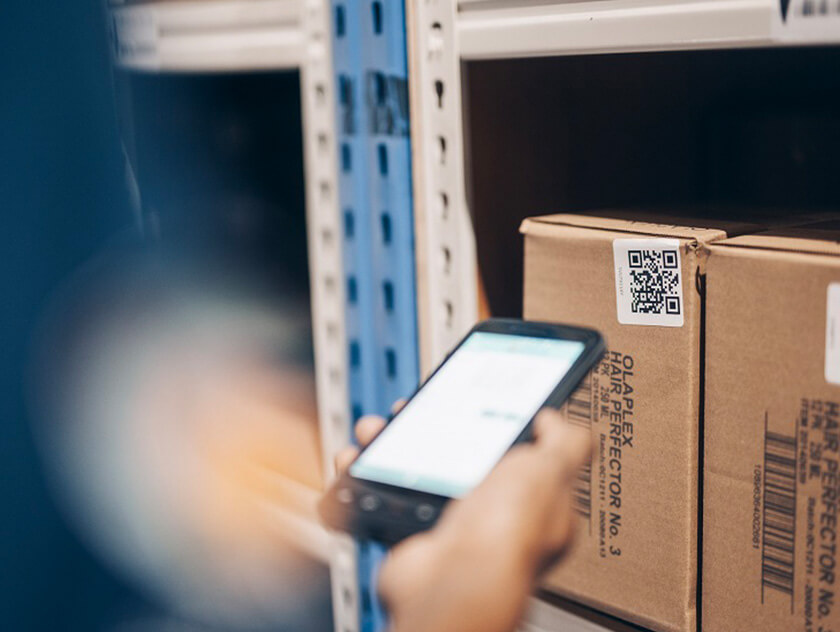The ongoing COVID-19 pandemic has spotlighted the importance of Singapore’s logistics sector. One such example is the import and dissemination of COVID-19 vaccines, which required meticulous supply chain planning.
Sheer volume aside, the vaccines required specific storage conditions that must be maintained and monitored from their production to their eventual usage. A robust supply chain with built-in redundancy and good visibility of every link was thus crucial in ensuring a successful vaccine rollout.
Changes have been afoot since before the pandemic. In the last two years, the logistics sector has shown signs of transformation, such as the adopting of new technologies like autonomous mobile robots and warehouse automation.
To support the industry’s evolving needs, JTC has been working with partners such as Enterprise Singapore (ESG), A*STAR’s SIMTech, and the Centre of Innovation for Supply Chain Management at Republic Polytechnic (COI-SCM) on a broad suite of possible solutions for logistics companies in Singapore.
Part of this is infrastructural, with projects like the JTC Logistics Hub @ Gul enabling synergies between different operators within the industry. Support has also come in other forms, from training programmes to outreach efforts to build a stronger talent pipeline.
The new paradigm demands agility and visibility
Many logistics firms in Singapore remain fairly traditional in their operations. They may still be reliant on manual processes for receiving, tracking, and fulfilling orders, or continue to process transactions using physical documents.
COVID-19 has, however, accelerated the growth of digital transactions, such as the volume of business-to-consumer business in e-commerce. Because of this, there is a new emphasis for supply chains to have increased agility and visibility.
In the case of a retailer, for example, agility is required for processes such as piece-picking — a typical order now has a high-product-yet-low-volume mix and deliveries must be made to different places at different times. In such instances, visibility is necessary for inventory management, order tracking, as well as proof of delivery.
As such, traditional practices will not be able to support the agility and visibility that is increasingly demanded, as they simply cannot be scaled to meet the industry’s needs.
Digitalisation is the key to overcoming these challenges
To meet the requirements for agility and visibility, companies will need to digitalise their operations. Mr Law Chung Ming, the executive director of Transport and Logistics at ESG, called this the “enabler for an engaged workforce, sustainable enterprises, and a resilient connectivity hub.” He further elaborated that it would need to apply to the logistics ecosystem as a whole, from manufacturers to importers, retailers, and all other links of the supply chain.
By tapping into technologies like the Internet of Things (IoT) and machine learning, supply chain visibility can be improved. Companies can then plan more effectively while also being more responsive to changes.
Mr Edmund Chan, assistant director of the Centre of Innovation for Supply Chain Management at Republic Polytechnic, made a case for digitisation right at the source using e-commerce platforms or ordering apps. He shared that doing so supports downstream order processing, inventory, and delivery management. This may result in time savings of 50% to 80%, while reducing errors down to nearly zero. The rest of the supply chain can also be progressively digitised as well.
On a macro level, digitalisation will allow partners to coordinate with each other more closely. According to Mr Law, the Singapore Trade Data Exchange (SGTraDex) facilitates the sharing of data between partners via a common data highway. Its use case on ‘Container Flow Node Decongestion’ seeks to provide greater visibility to supply chain logistics partners (for example, port operators, hauliers, and depots), which will improve asset utilisation and enhance operational efficiencies.
There is no one-size-fits-all solution
The process of digitalisation is specific to each company depending on its current business model, operations, manpower, and systems. A last-mile provider could find that implementing a simple fleet management system would yield the greatest immediate improvements to its costs and productivity. Another similar company at a more advanced stage of digitalisation, however, may need to integrate various systems into a cohesive whole instead.
Mr Rick Yeo, director of the Manufacturing Productivity Technology Centre at A*STAR SIMTech, noted that a company that is planning its digitisation journey should consider the overall transformation process first.
An approach it can explore? Embark on a diagnostics session first to understand the issues and areas of improvements prior to adopting any solutions. The transition to an integrated digital system can take place in phases, beginning with solutions that are the simplest and cheapest to implement for “quick wins” before other solutions are subsequently added. Thus, a systemic analysis at the beginning will ensure that the overall process is well-managed.
Various resources are available to support companies' transformations
For companies that are planning to embark on their digitalisation journey, myriad resources are available. The Productivity Solutions Grant, for one, enables firms to adopt pre-scoped digital solutions such as inventory management systems. Custom solutions, on the other hand, can be worked out through projects funded with the help of the Enterprise Development Grant.
These grants are not meant to be standalone solutions. Industry partners such as A*STAR SIMTech and COI-SCM are on hand to lend their expertise to companies that require help, whether through advisory and consultancy services, implementing solutions, or other means.
Dr Joel Tay, the section manager of manufacturing operations management at A*STAR SIMTech, stressed that profits are not the primary motive for these services. He emphasised that it is important to understand a company’s pain points and their business process flow. “We can offer a range of solutions that are already out there or pull in other external partners to develop new solutions if needed. What’s important is that we’ve developed the expertise to help companies determine what is necessary,” he said.
Improving supply chain efficiency post-COVID-19 will no doubt be a continuous effort, but public-private partnerships, plus a range of initiatives that support and catalyse transformation, will help to steer the logistics industry in the right direction.


